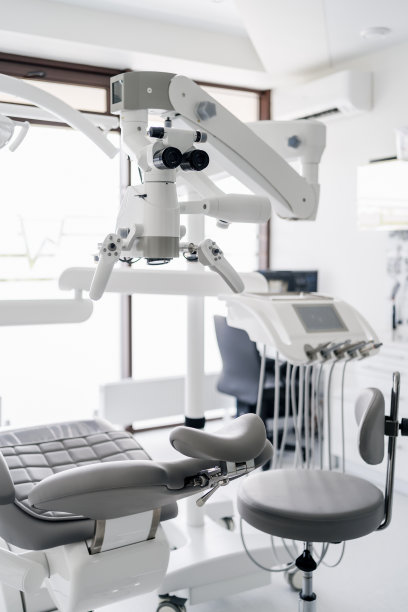Understanding Periodontal Disease Causes, Symptoms, Treatment Options, and Prevention Strategies for Optimal Oral Health
Summary: Periodontal disease is a complex dental condition that affects the gums and surrounding structures of the teeth. Understanding its causes, symptoms, treatment options, and prevention strategies is essential for achieving optimal oral health. This article aims to provide insight into the various aspects of periodontal disease, focusing on how to recognize its onset, the necessary interventions, and proactive measures to maintain healthy gums. With knowledge of the factors contributing to periodontal disease, early identification of symptoms, and appropriate treatment plans, individuals can take significant steps toward preserving their dental health and preventing complications.
1. Causes of Periodontal Disease

Periodontal disease is primarily caused by the accumulation of plaque, a sticky film of bacteria that forms on teeth. Poor oral hygiene contributes to the buildup of plaque, which, if not removed, hardens into tartar. Tartar can only be removed through professional dental cleaning, leading to inflammation and gum disease if allowed to persist. Moreover, genetic predisposition plays a significant role; individuals with a family history of periodontal issues may be more susceptible despite practicing good oral care.
Other factors that contribute to the development of periodontal disease include smoking, hormonal changes, and certain medical conditions. Smoking weakens gum tissues, making them more vulnerable to infection. Additionally, conditions such as diabetes can impair blood flow and reduce the bodys ability to fight off infections, further exacerbating gum problems. Stress and a poor diet lacking essential nutrients can also adversely affect gum health, highlighting the need for holistic care.
Finally, medications that cause dry mouth can increase the risk of periodontal disease by reducing saliva production, which plays a crucial role in washing away food particles and bacteria. Therefore, a comprehensive understanding of these causes helps individuals identify risk factors and adapt their lifestyle choices for better oral health.
2. Recognizing the Symptoms
Early signs of periodontal disease can be subtle, making regular dental check-ups even more vital. Common symptoms include swollen, red, or bleeding gums, often noticeable during brushing or flossing. Halitosis, or persistent bad breath, is another indicator, resulting from bacteria buildup in the mouth. Recognizing these symptoms promptly can initiate early intervention, greatly improving treatment outcomes.
As the disease progresses, additional symptoms may develop. Pockets may form between the teeth and gums where bacteria can thrive, leading to further tissue destruction. Individuals may also experience painful chewing, sensitivity to hot and cold, and significant tooth mobility as the supporting structures weaken. These later-stage symptoms highlight the importance of monitoring one’s oral health regularly.
It’s essential to understand that symptoms can vary from person to person; some may not exhibit noticeable signs. Therefore, individuals should remain vigilant and proactive about their oral health by visiting their dentist for routine examinations and professional cleanings to catch any problems early on.
3. Available Treatment Options
When it comes to treating periodontal disease, early intervention is key to successful outcomes. The initial approach often involves a thorough professional cleaning known as scaling and root planing. This deep-cleaning procedure removes plaque and tartar from below the gum line and smooths the root surfaces to promote healing. Many patients experience a significant improvement in gum health following this treatment.
If the disease is further along, surgical options may be necessary. Procedures like flap surgery aim to reduce the size of gum pockets, while bone grafts can regenerate lost bone structure. Guided tissue regeneration can also be implemented to encourage the growth of healthy bone and gum tissue. In more severe cases, antibiotics, either topical or systemic, may be prescribed to combat infection and assist in healing.
Long-term management is critical, as periodontal disease can recur. Patients need to adopt effective home care routines, including diligent brushing, flossing, and regular dental visits to follow up and monitor their dental health. Working closely with a dental professional ensures that tailored treatment plans are created and adjusted as needed to sustain optimal oral health.
4. Prevention Strategies for Healthy Gums
Preventing periodontal disease begins with establishing and maintaining strong oral hygiene practices. Brushing twice a day and flossing daily are fundamental to removing plaque before it hardens into tartar. Using an antibacterial mouthwash can further support gum health by reducing bacterial buildup. Additionally, utilizing a soft-bristle toothbrush and practicing gentle brushing techniques can help avoid damaging gum tissues.
Regular dental check-ups are another vital component of prevention. During these visits, dental professionals can conduct cleanings and inspect areas that may be prone to gum disease. Early detection allows for preventive measures to be taken before the disease advances. Furthermore, individuals should be open with their dentists about any medications or medical conditions that might influence their oral health.
Adopting a healthy lifestyle significantly contributes to periodontal disease prevention. Quitting smoking, managing stress, and ensuring a balanced diet rich in vitamins and minerals can bolster the immune system and promote overall health. By committing to these prevention strategies, individuals can maintain the health of their gums and reduce their risk of periodontal disease.
Summary:
Understanding periodontal disease—its causes, symptoms, treatment options, and prevention strategies—empowers individuals to take charge of their oral health. Knowledge is the first step toward prevention and effective management of this condition, paving the way for healthier gums and smiles.
This article is compiled by Vickong Dental and the content is for reference only



